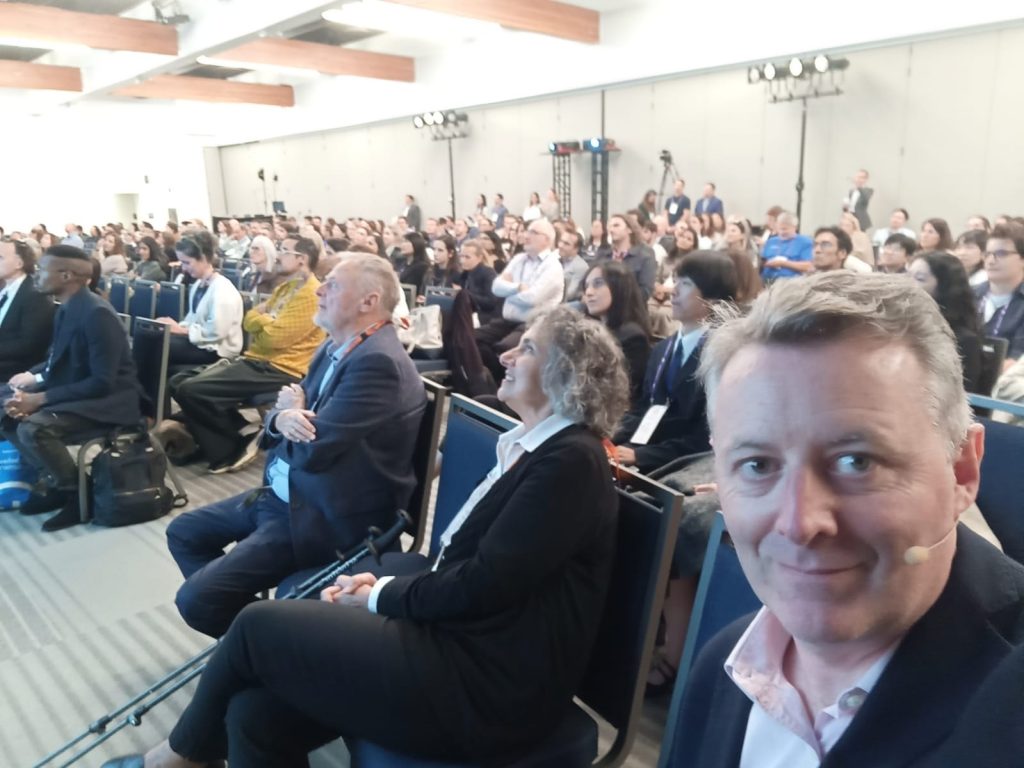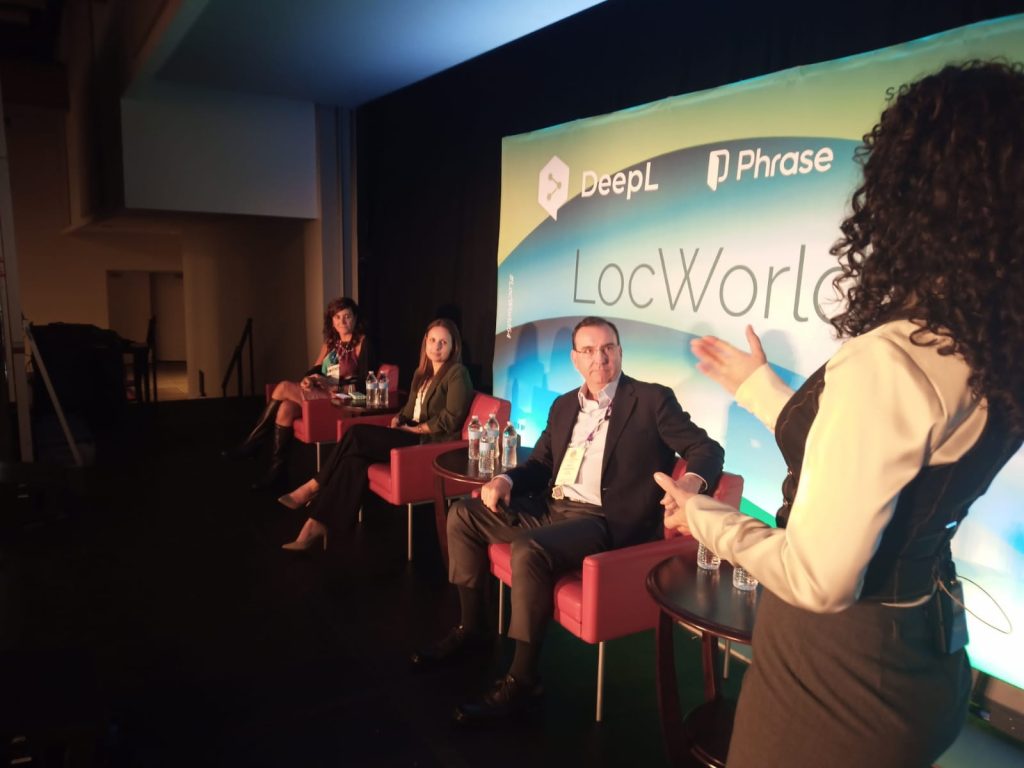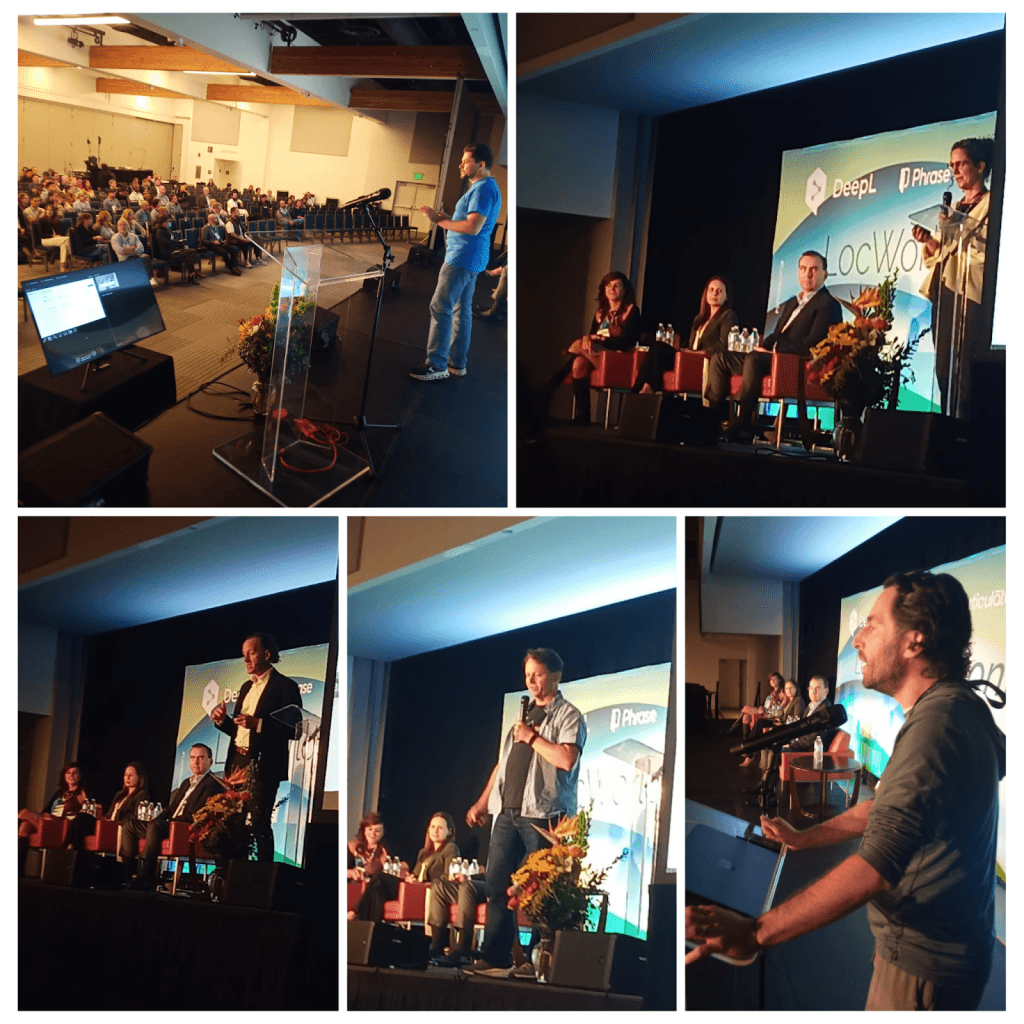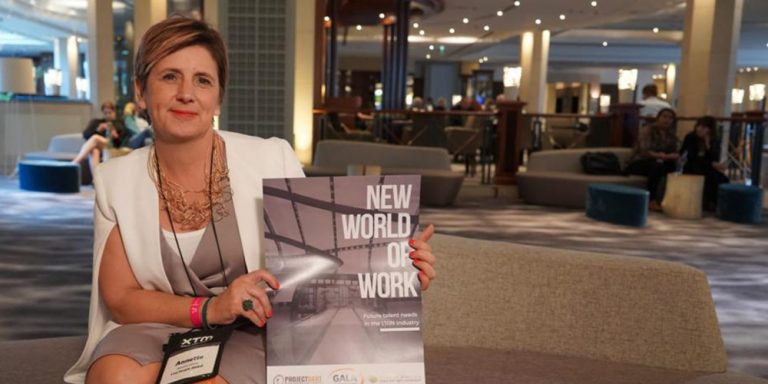“Every event now feels like a prism on the industry” – LocWorld54 did not disappoint
This article reflects our shared perspective – co-authored by Olga Blasco and Dave Ruane – on how LocWorld54 was a microcosm of the shifts now reshaping our industry.
A month after returning from LocWorld54 in Monterey, we realized this wasn’t going to be the usual conference recap. What unfolded there offered something far more compelling. Every recent industry gathering now feels like a prism on the industry – a moment when the forces shaping localization and global content come into sharper focus.
What Felt Different This Year
LocWorld54 carried a vibrancy that felt new, though had been building up this year. The energy in the hallways, lobbies, and meeting rooms had a momentum of its own – not rushed, highly intentional; not chaotic, but purposeful. Everywhere you turned, people were sharing insights and discoveries about AI not as distant theory or marketing, but as something real and evolving right in front of us.
The most striking shift was the industry’s “getting on with it” attitude. Instead of hesitation or fatigue from the pace of change, there was a genuine sense of positivity on the conference floor. Attendees weren’t just talking about transformation; they were already experimenting, adapting, and moving forward together.
Networking mirrored this change. Spontaneous interactions still happened on the conference floor – but the intent behind them had evolved. People were using moments wisely: to exchange insights, explore new partnerships, and accelerate ideas that had often begun online months before. Many attendees came with full calendars (including ourselves), having lined up introductions well in advance. Yet, despite the packed agendas, the energy stayed warm and open. The face-to-face time was treated as precious, not just for catching up, but for getting things done.

AI & Innovation: Beyond the Tipping Point
AI dominated the dialogue again this year, but on entirely new terms. We’ve moved from speculative conversations about AI to a moment where it’s actively reshaping how companies think, plan, and deliver localization. Companies are no longer asking if AI will reshape localization. They’re asking how fast and in what direction.
The sector has already crossed multiple tipping points. Organizations that waited until they felt revenue pressure, shifting client expectations, or declining transfer volumes were forced to react out of necessity. Those who planned ahead are the ones now accelerating their adoption, experimenting, and sometimes improvising in ways that bring real innovation.
What differentiates leaders today is not their AI tools but their AI roadmaps. The companies building strategic, long-term frameworks – not patchwork fixes – are the ones unlocking scalable, sustainable advantage. AI is not just a new tool in localization, it’s an umbrella wrapper for the next structural shift. And how companies respond now will determine whether they’re reacting to disruption or leading through it.
The open question is not if AI will reshape localization – it is how soon, and how leaders will balance automation with empathy and operational efficiency with governance. Those who treat AI as orchestration – not replacement – are emerging as the true innovators.

Inside the Process Innovation Challenge: A Glimpse Into Tomorrow
The Process Innovation Challenge (PIC) once again served as a mirror reflecting where the industry is heading – and this year, the reflection was brighter than ever. The six finalists showcased not only creative ideas but also how to pitch innovation effectively. The overall standard was exceptional.
Themes emerged:
- A shift from automation to governance
- From isolated tools to orchestrated ecosystems
- From producing more content to managing content more intelligently
- From incremental improvements to bold reinvention
We also saw the creative reuse of established technologies – particularly terminology management – repurposed for entirely new, AI-driven contexts.
The winning concept by Sheriff Issaka (African Languages Lab), centered on LLMs for African languages, was particularly meaningful, bringing diversity and inclusion into the spotlight. Innovation isn’t limited to productivity gains; it also expands access and representation.

Alongside the final, PIC Sneaks was a new platform and emerged as a space where rising talent could test bold ideas publicly. We were thrilled by the response and the quality of ideas that emerged. It’s still early days, but from these green shoots can grow mighty oaks, and that perfectly captures the spirit of PIC Sneaks.
Transformation in Motion: What Success Really Looks Like
Transformation isn’t a buzzword anymore – it’s strategy in motion.
Companies are redefining processes, roles, and partnerships to stay agile and resilient.
The conversation is shifting from “How much work did we produce?” to “What business value did we create?”.
The real signal of progress is when teams focus on Key Business Objectives (KBOs) and the outcomes their solutions deliver, rather than the operational metrics of the solution itself. It’s not about saying, “we produced five million words” or “we hit a 90% quality score.” It’s about showing how those efforts moved the needle for the business. When that shift happens, the service model becomes secondary, and organizations naturally begin to pivot toward new, more outcome-driven models, unanchored from traditional delivery structures.
What we see across successfully transforming organizations is:
- Clear orchestration between content creation, transformation, and delivery
- Tiered workflows aligned to content value and purpose
- AI applied not as a one-size-fits-all tool but as part of a thoughtful ecosystem
- M&A used strategically to expand capabilities and strengthen market positioning
- Innovation embedded into culture, not bolted onto the tech stack
These companies aren’t just adapting. The organizations leading the transformation are accelerating their AI pivot to future-proof their position, strengthen market leadership, and create long-term shareholder value.
They not only meet rising client expectations for speed, scalability, and intelligence; they elevate their service portfolio, unlock higher profitability, and leapfrog competitors by helping clients accelerate their own AI adoption. At the same time, they pursue strategic and opportunistic M&A and partnerships to expand capabilities and capture new growth opportunities.

M&A and Strategic Growth: What Founders Need to Prioritize
As the market evolves, strategic partnerships, mergers, and acquisitions are becoming central to growth. Scale isn’t the primary driver anymore. Capability is. Readiness is. Positioning is.
For founders, the message is increasingly clear:
They should position their business as a high-value content solutions professional services: You’re not selling “translation” or “localization.” You’re selling outcomes: efficiency, market entry, brand reach.
Clients don’t want conversations about word counts or AI mechanisms. They want:
- Business outcomes
- Market acceleration
- Brand safety
- Risk mitigation
- Clear returns on content investment
This is the shift from vendor to partner, service to governance, execution to strategy.
The main lesson which was also reflected at LocWorld is that there is this collective realization that human intelligence augmented by AI is what builds value and drives results. For those disruptors holding the holy grail of competitive advantage, a golden exit is the horizon. For those facing a fork in the road, they need to decide if they have an appetite to invest and accelerate their pivot and scale impact, join forces with a friendly equal, or hand over their legacy to a larger entity that can uplift the performance of each client portfolio with large sales and technology capabilities.
The right choice depends on appetite, ambition, and alignment with where the market is clearly heading.

The Future of Localization: Skills, Mindsets & Momentum
AI automates more tasks, but human value is not diminishing, and hiring is shifting now from “title-based” to “skills-first”, opening the door to unconventional talent.
The professionals who will thrive in the next era will be those who:
- Act as “Swiss-army-knife” contributors, leveraging AI to amplify their impact across multiple functions
- Demonstrate strong emotional intelligence and cultural alignment
- Bring a growth mindset and AI-enabled capabilities
- Show passion, curiosity, empathy, and the ability to collaborate fluidly across teams and contexts to deliver results
AI amplifies capability. Human intelligence positions it for impact.
If We Had to Choose One Word…
Acceptance fits the bill, acceptance that new business models are needed, that old ways won’t cut it with early and late majority clients any more and that the flux we see will continue and that teams need to be at least on par with the accepted new ways of doing things and driving to be ahead of them.
Conclusion: Building the Future, One Conversation at a Time
LocWorld54 reminded us why these events matter – not just because of the sessions or the venues, but because of the clarity they provide. Each event becomes a prism, refracting the industry’s shifts in new ways, revealing what’s emerging and what’s fading.
Across themes – AI, governance, transformation, innovation, talent, M&A – one message echoed throughout Monterey:
Deployed momentum matters more than perfection.
The companies that embrace this momentum, experiment with intention, and reimagine their models will define the next chapter of global content. As leaders, our responsibility is to keep the conversations going, strengthen the collaborations, and continue leaning forward.
The future of global content is already being shaped – one decision, one partnership, one innovation at a time. What prism are you using to define yours?






